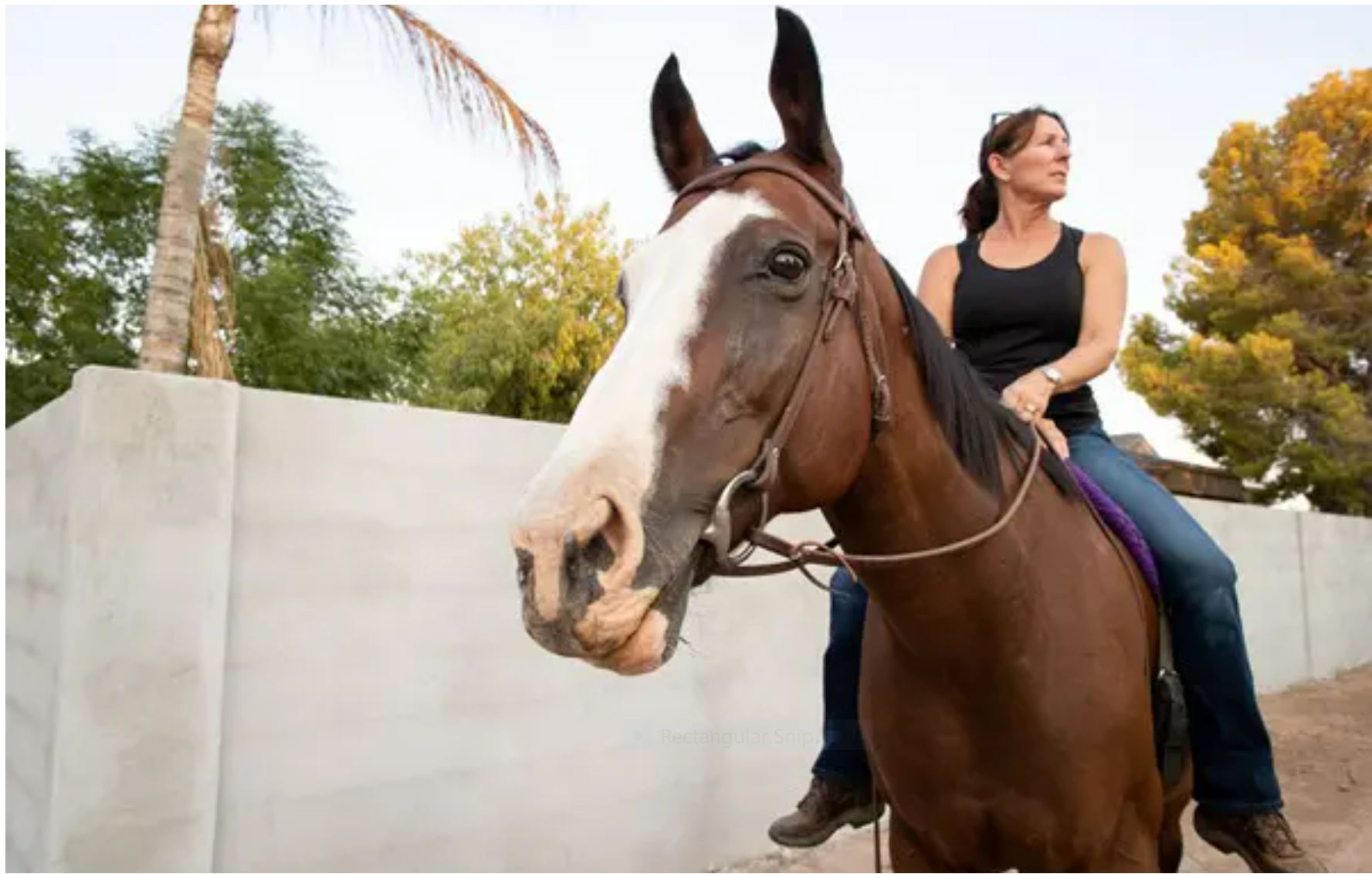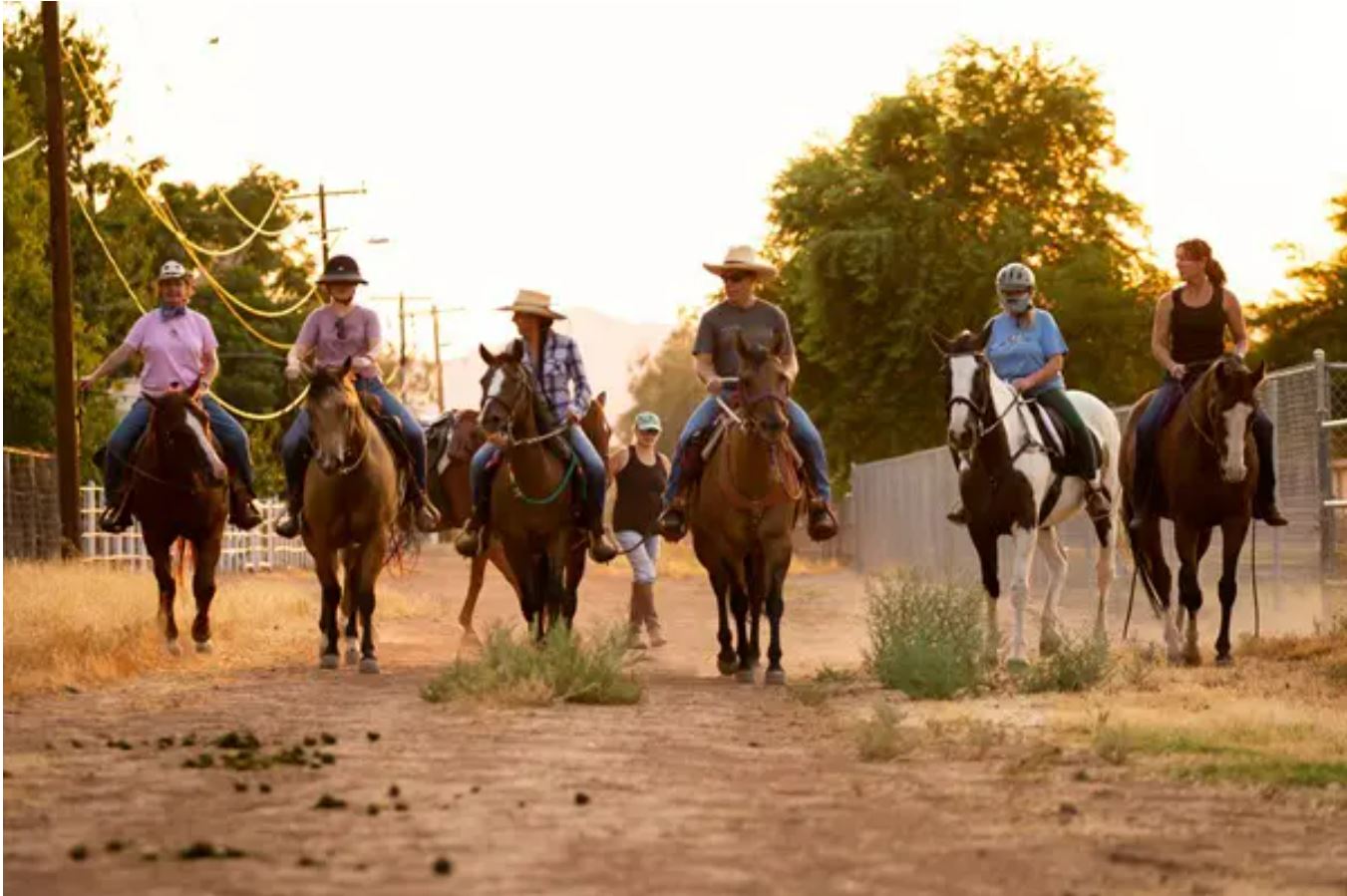
Disgruntled neighbors in Tempe’s prestigious Buena Vista Ranchos, Calle de Caballos and Sunburst Farms horse-property communities have been heard: Tempe City Council on Oct. 14 reversed course, unanimously approving action in a long-standing controversy that could bring down a block wall built by a Shady Lane Estates homeowner that extends into an equestrian-path easement.
“We actually got them (City Council members) to change their minds,” said Matt Schmehl, who worked alongside groups objecting to the wall.
The City Council approved options up to and including legal action in the dispute over the wall in the easement of the bridle path near Carver Lane along a trail that winds through three South Tempe neighborhoods.
The City Council’s approval authorizes city staff to engage in action beyond alternative dispute resolution if necessary. Options will likely involve members of the public who raised issues concerning the bridle path, residents of Shady Lane Estates and the Shady Lane Estates Homeowners Association.
City staff is expected to present options and take appropriate actions based upon this approval by Council to work toward amicable and legal resolutions to benefit the community.
Tempe City Attorney Judith Baumann did not immediately respond to a request for comment from Wrangler News.
Schmehl and others who live in the area spent 14 months doing research and communicating with city officials, urging them to enforce the law that they say is on their side.
“The letters helped. I think what had to become obvious to them is that I wasn’t going away and the neighborhood wasn’t going away,” Schmehl said. “We also made it clear to them that we did have a source of funding and were prepared to go to court if necessary.”
That included potential action not just against the Shady Lane homeowner but also against the city.

“This is a really important action by Tempe, and it actually does show that the mayor and Council have listened to us about our concerns,” Schmehl wrote in an email to neighbors who oppose the wall.
Schmehl said that in similar situations, cities typically would first cite the homeowner for the wall. Thirty to 60 days would be given for response. The homeowner could choose to ignore the citation or fight it. Schmehl does not believe that such a fight in this case would be winnable for the homeowner.
The neighborhood’s 1995 plat map—the official record of easements and rights of way—contains clear references to the bridle-path easement.
The controversy was spurred last year when the resident of Shady Lane Estates hired a surveyor and built a 328-foot-long block wall that extends 10 feet into the bridle path.
Tempe officials initially said it is not a city matter but a private-property issue, and therefore the city has no jurisdiction.
“We have been in contact with the homeowners association and understand that the wall was approved by their architectural committee, so that’s just a very brief background to make the public aware of the issue and the fact that the city has spent some time looking into it,” Baumann, the city attorney, said at the time.
An Aug. 17, 2020, email from Shady Lane HOA President Larry Heywood to Christa Zamora, a South Tempe resident who objects to the wall, states that the neighborhood’s architectural committee did not object to the building of the wall “as long as the owner of Lot 7 adhered to any restrictions by the City of Tempe or any other approvals required. … If there are easements on a lot, compliance with the requirements of any such easements are the responsibility of the lot owner.”
A March 2020 email from Ryan Levesque, Tempe Deputy Community Development Director for Planning, to the surveyor and the Shady Lane Estates homeowner at the center of the tempest stated that:
“You are seeking to abandon an easement, but because the city required the easement at the time of the zoning action (condition of approval), the reversal of a condition of zoning would require going through the very same process that the condition was placed on the property (an ordinance through a public hearing).”
There was no public hearing before the wall went up.
Schmehl said at that time that city-approved bridle paths are “under attack while the city of Tempe relies on an unelected official, the city attorney, for unreliable advice.”
Schmehl noted that his group’s research revealed that a city 12-inch water pipe runs along the path, and “the size of the water-line easement does not meet the width requirements and may in fact be encroached upon by the offending wall.”
The very existence of Shady Lane Estates, Schmehl said, was conditioned upon the development honoring the easement.
“The evidence is clear that this encroaching wall on the bridle path is a knowing and willful violation of the legal stipulations on the plat map and the laws enumerated in the Tempe City Code,” Schmehl said.
Patti Lines bought her home in Sunburst Farms two years ago.
“I did everything I could to be in this neighborhood,” Lines said.
That included pooling all her resources to pay cash for the home she says is “a piece of crap.” She said that she wouldn’t have been able to obtain a loan for it. It wasn’t about the house—it was about the horse.
“This is irrigated property and so I have a green patch for my horse to graze in. I have trails to ride on and I’m close to everything,” Lines said. “It’s a very peaceful feel here.”
Cheryl Rogers owns three horses and has lived in Sunburst Farms since 1982. She said she uses the equestrian trail that passes through the area twice a week.
The Shady Lane Estates homeowner built a wall just inside his property line yet it extends 10 feet into the bridle path due to the easement.
Residents fear that the wall could set a precedent that endangers their rural way of life.
“If we let him take that portion of the easement with no action, then that sets a precedent that could let other homeowners take back their easement with no consequences,” Schmehl said. “And if we start losing portions of our bridle path, that impacts all of our property values and the lifestyle that people like in this neighborhood.”
Buena Vista Ranchos, Calle de Caballos and Sunburst Farms neighborhoods in South Tempe are unique in that they contain the only bridle-path system in the city.
Rogers says she attended Tempe City Council meetings back in 1995 when the developer of Shady Lane Estates proposed his project.
“We said, ‘It’s not a good idea to put non-horse properties surrounded by horse properties because they are not going to like the flies and the dust,” Rogers said.
Tempe City Councilmember Jennifer Adams lives in South Tempe and frequently rides her horse on the trail.
“It’s really kind of a mess. A lot of these people lived there then and they didn’t want this Shady Lanes development in the first place. So they went to the council meetings,” Adams said when the controversy surfaced last year. “I would never have approved that. You’ve got big estates in the middle of horse property—that’s just not a good fit in my opinion.”
Schmehl provided Wrangler News with a string of emails between Jim Flack, the commercial surveyor hired by the homeowner who had the block wall built, and Tempe officials leading up to the building of the wall.
In a December 5, 2019, email to Flack from Kathy Pettigrew, real estate management coordinator for community development and building safety in Tempe, Pettigrew explains that “Shady Lane Estates was carved out of an area where equestrian paths and uses were already in place, causing the City to require the subdivision to be conditioned to continue to be subject to them. The City would have no authority to abandon any portion of that path as it is not a public easement nor right of way, and I have no evidence that the City has any property interest nor authority to regulate the path.”
In a March 2, 2020, email, Levesque, the Tempe Deputy Director of Planning, responded that because the city required the easement at the time of the zoning action as a condition of approval, any reversal of a condition of zoning would require going through the same process that the condition was placed on the property.
“I don’t believe there is support for such a request, as staff would be the recommending body,” Levesque wrote.
In an Aug. 17 email from Larry Heywood of Heywood Management, the company that manages Shady Lanes Estates, to Christa Zamora, a Sunburst Farms resident, Heywood said the development’s architectural committee did not object to the building of the wall “as long as the owner of lot 7 adhered to any restrictions by the City of Tempe or any other approvals required…if there are easements on a lot, compliance with the requirements of any such easements are the responsibility of the lot owner.”
A plat map at the Maricopa County Assessor’s office shows property details of the Shady Lanes subdivision and contains clear references to the bridle path easement.
Wrangler News made several attempts to obtain comments from the Shady Lane Estates resident who built the block wall but received no response.
Schmehl wrote to the City Council and mayor Aug. 14, 2020 outlining that in 1995 when the Shady Lane Estates developer sought a variance, an agreement was struck that “Shady Lane would contribute and maintain a portion of horse path on their border. At that time the south Tempe homeowners were encouraged by city staff to agree to the variances and accept this compromise. It was expressed to the staff at that time that it was important to maintain the rural setting that is unique to South Tempe and we were assured by the city that the requirement to include the additional horse path and the trees within would do that. The intent of these requirements was to buffer the existing AG zoned homes from exactly what is now occurring with the addition of the wall in the middle of the horse path.”

